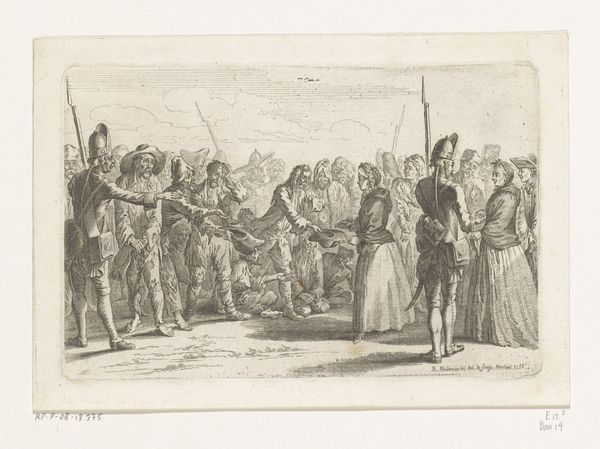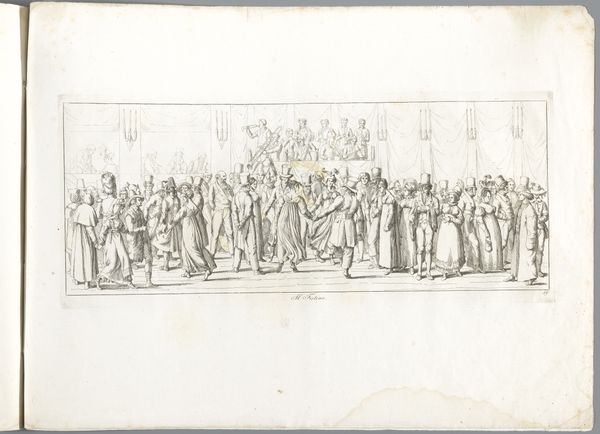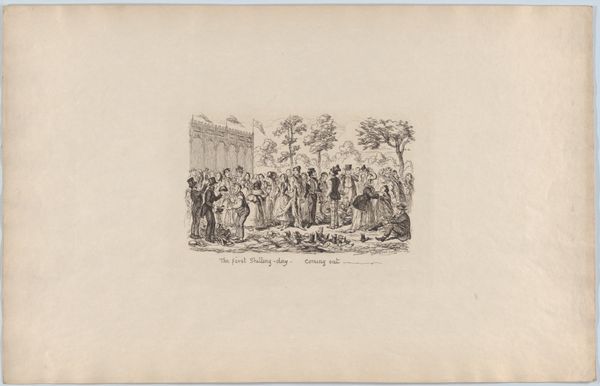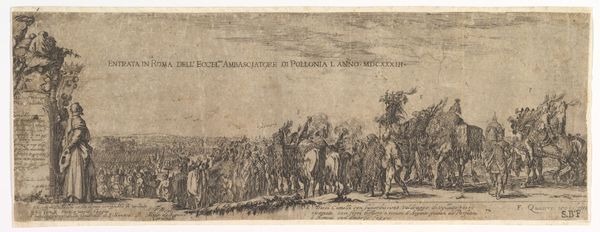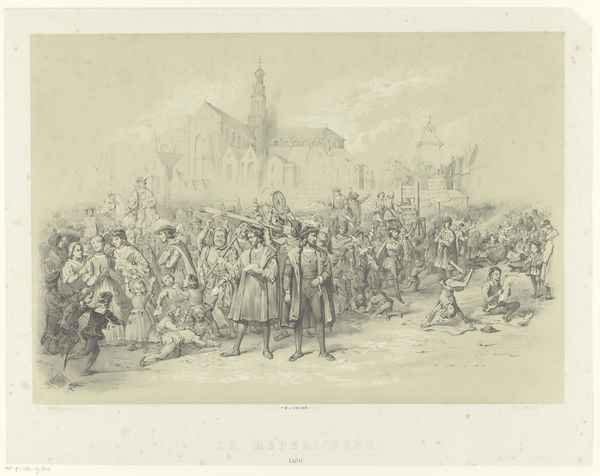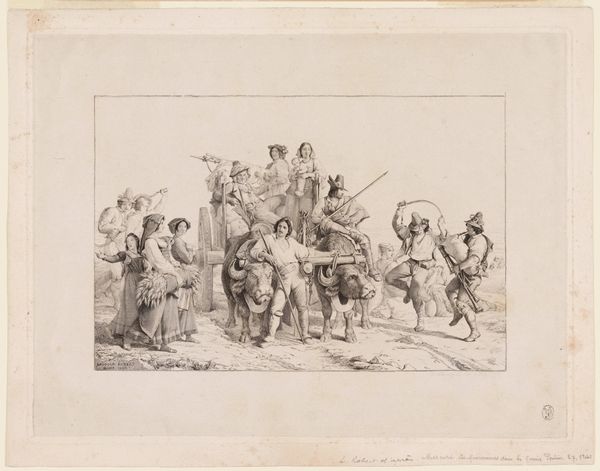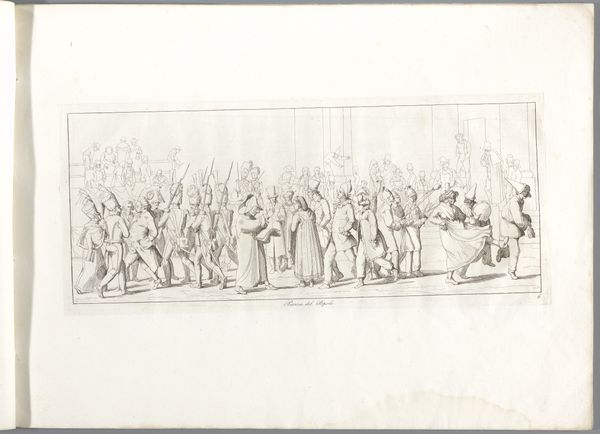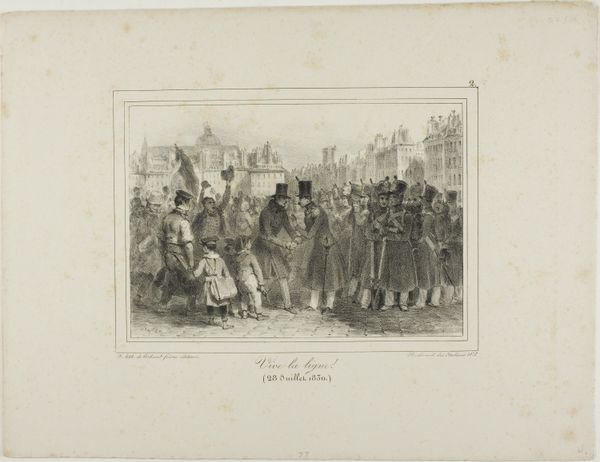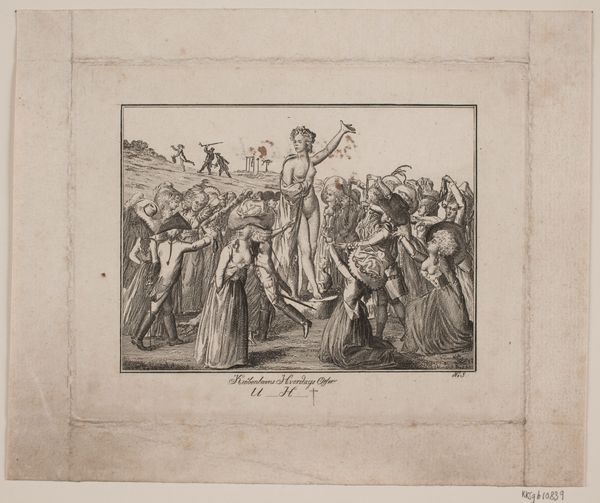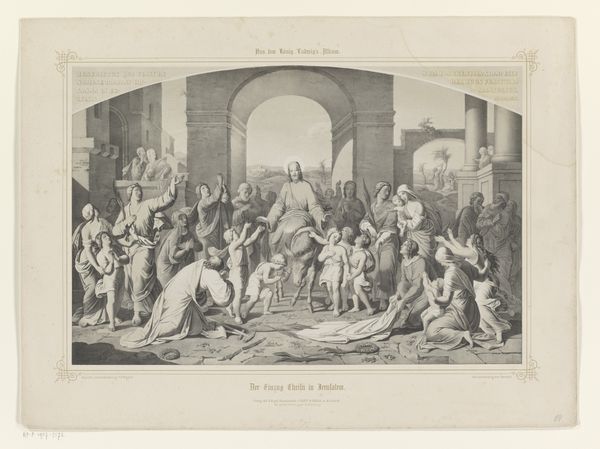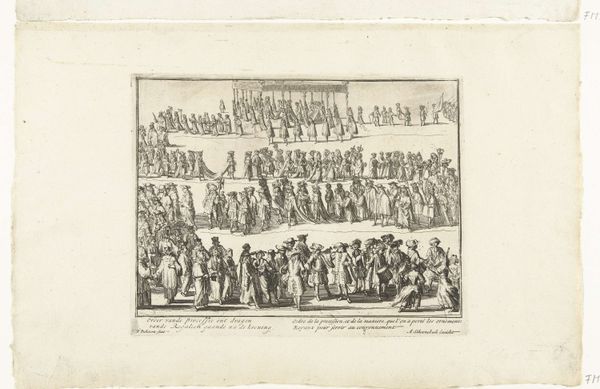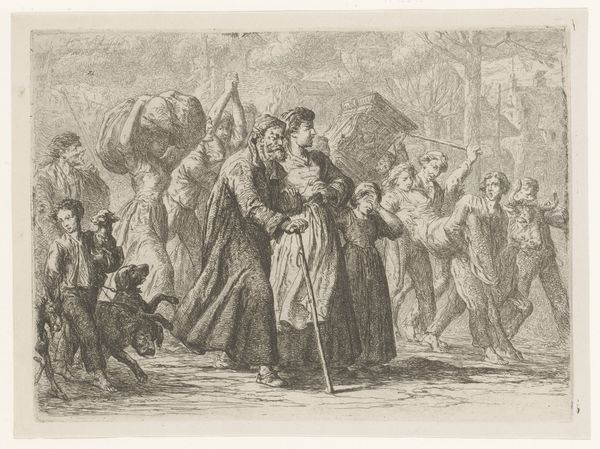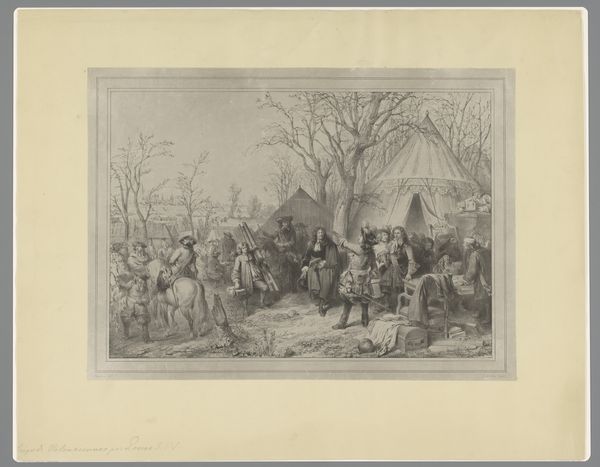
print, engraving
# print
#
group-portraits
#
romanticism
#
cityscape
#
history-painting
#
engraving
Dimensions: height 216 mm, width 337 mm
Copyright: Rijks Museum: Open Domain
Editor: This is an engraving titled "Catharina Paulowna van Rusland in Oxford, 1814" made in 1816. The artist is John Hughes. I’m struck by the depiction of a grand procession moving through a city; it has an almost chaotic feel because so many people are crammed into the image. What do you see in this piece? Curator: This print offers us a glimpse into the early 19th century and the public performance of power and diplomacy. Consider how the city itself becomes a stage. We see the architecture of Oxford as a backdrop, reinforcing notions of British tradition and prestige for this visiting Russian royalty. What message is conveyed by positioning Catherine Paulowna within this specifically British context? Editor: It seems to be using Oxford as a symbol of respect or almost like, legitimization? Showing that England approves of her, maybe? Curator: Exactly! The event itself – Catherine Paulowna’s visit and the subsequent artistic representation – served to cement political ties and signal mutual respect between Russia and Britain during the Napoleonic era. But also consider the politics of imagery here: the act of creating and circulating this print transforms a real-world event into a form of public memory. How might this type of imagery contribute to shaping public opinion and perceptions of international relations? Editor: So it’s more than just a picture; it's about building relationships between countries through art. It kind of frames the event, solidifying a particular narrative for the public to consume, isn’t it? Curator: Precisely. These visual representations shaped collective understanding. And we can’t overlook the fact that the artist chooses to portray this scene. It highlights not only the event itself, but also the artistic practices used to legitimize and commemorate events. Editor: That’s fascinating! I hadn't considered how much international politics can be tied into a seemingly straightforward depiction of a historical event. Curator: And by studying it we understand how public perception has historically been manipulated.
Comments
No comments
Be the first to comment and join the conversation on the ultimate creative platform.
